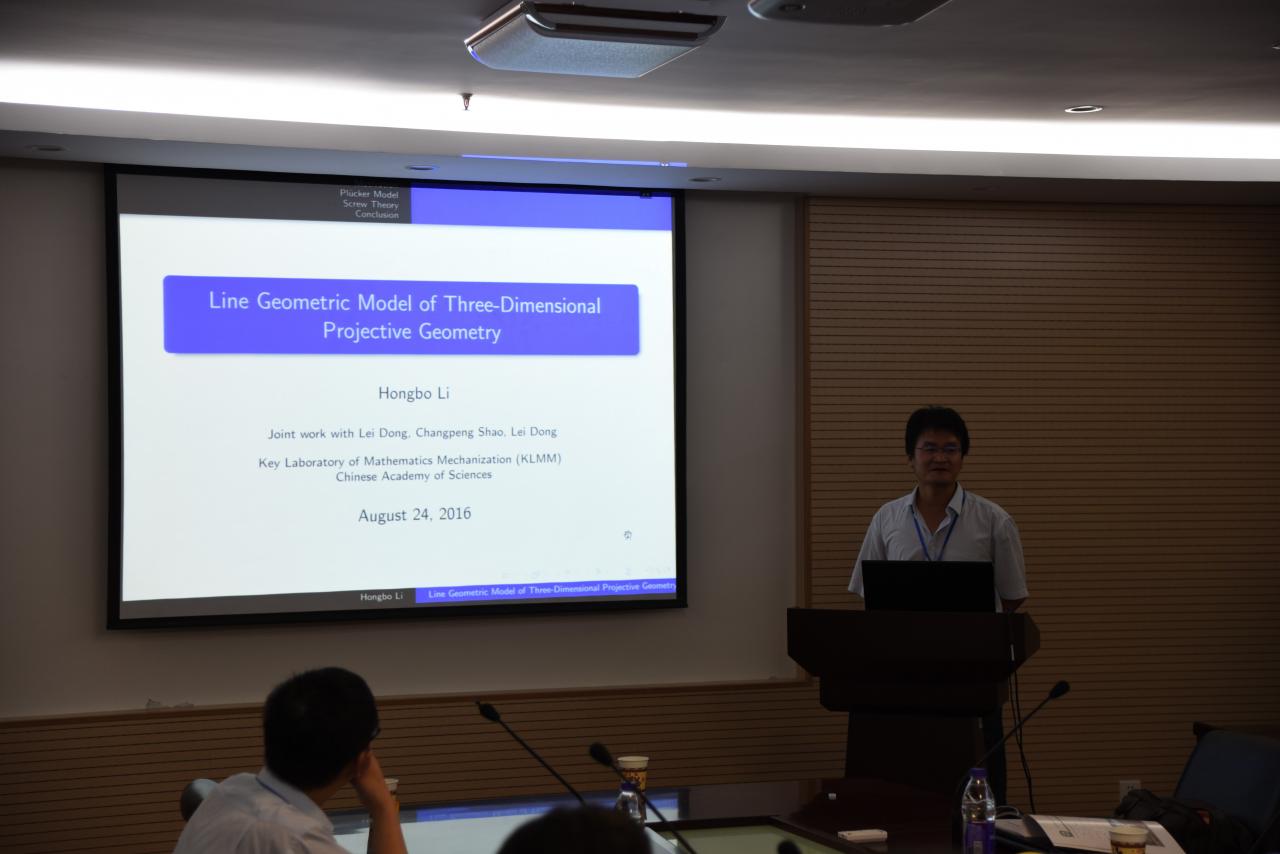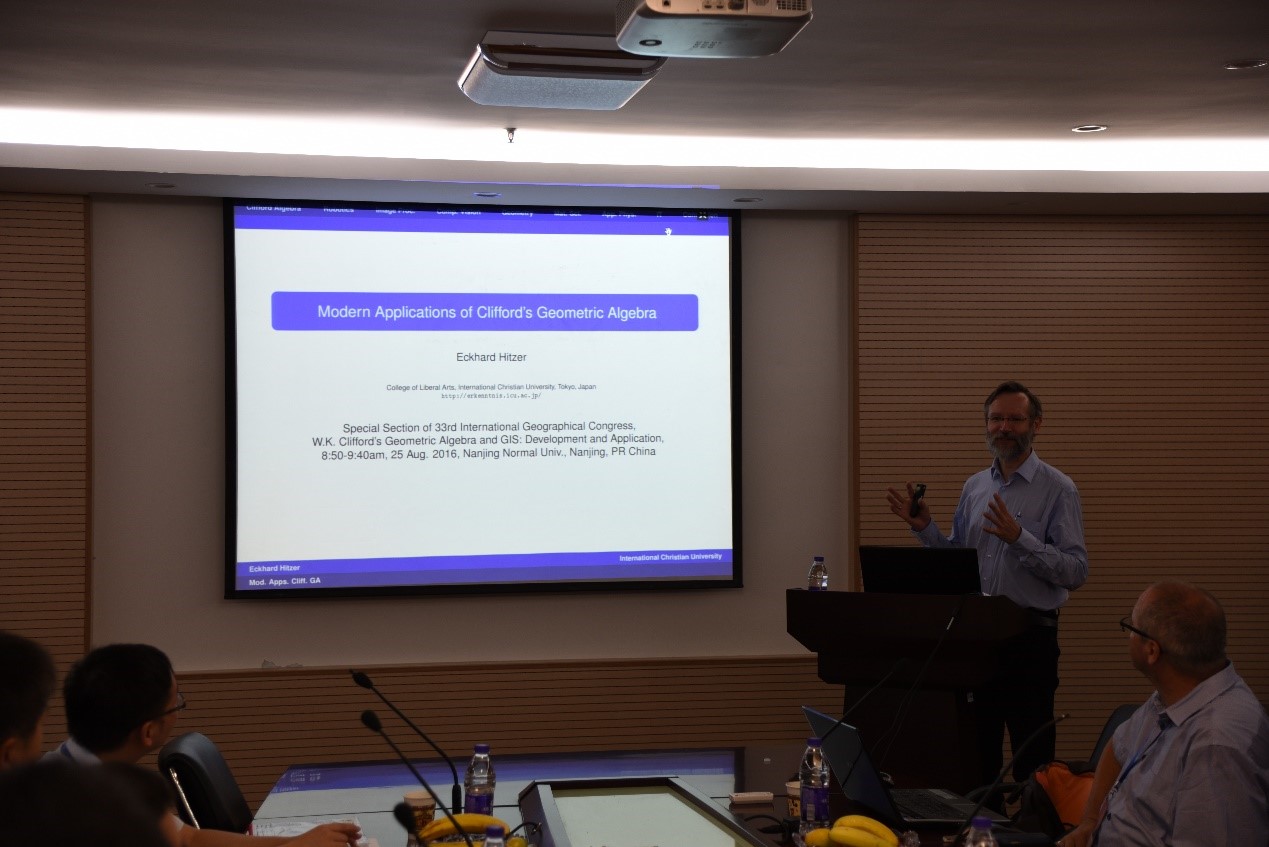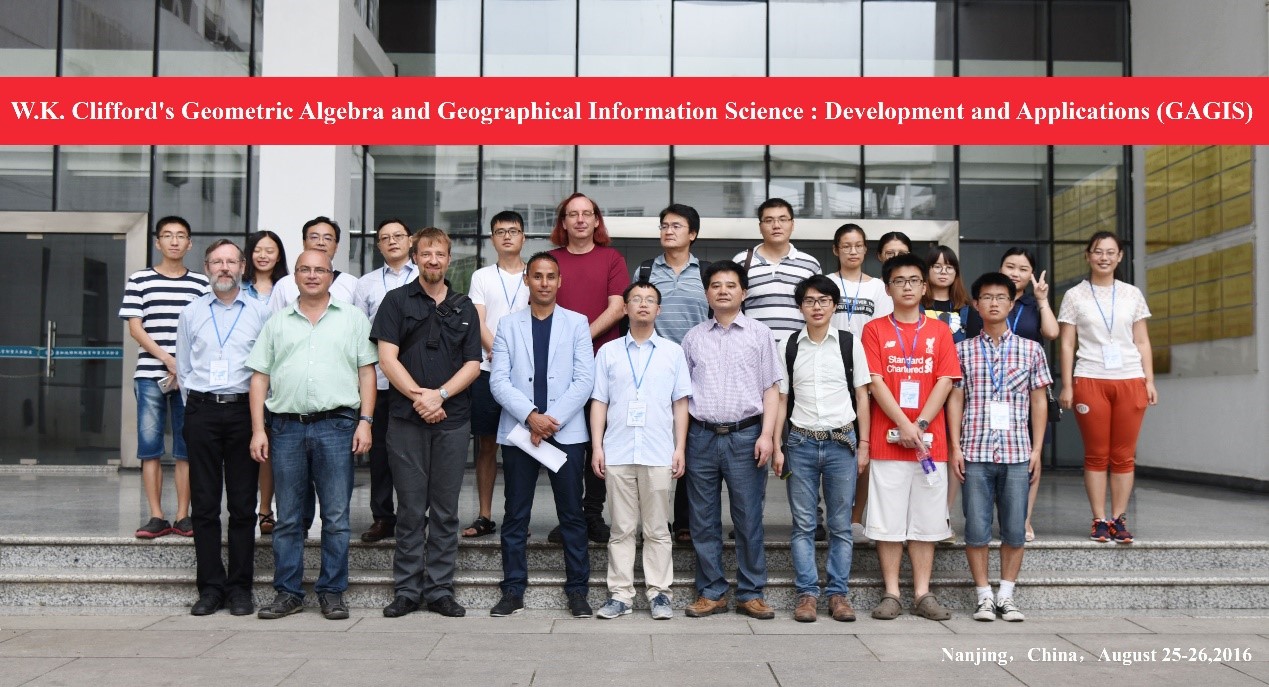Symposium on the 33rd session of the International Geographic Congress: The International Symposium on Geometric Algebra and the development and application of geo-information science successfully convened
August 2016 25 to 26th, w.k Clifford ‘ s geometric algebra and geographical information science:development and applications (Gagis ) (Special section of the 33rd International Geographical Congress) was held at the Institute of Geography Science, Nanjing Normal University. The conference was jointly organized by the key laboratory of virtual geographical environment education, the development and utilization of geo-information resources in Jiangsu Province and the Institute of Geography Science of Nanjing Normal University.Professor Lin Wang as the initiator and organizer of the Conference to preside at the opening ceremony.From Germany, Austria, the United States, Japan, Vietnam, China and other countries more than 20 scholars attended. The participants presented the latest research results from a number of professional fields.President of the General Assembly Eckhard Hitzer, Japan, reviewed the application of geometric algebra in the 21st century.Dr. Hildenbrand of Germany introduced the parallel computation strategy of geometric algebra, and put forward the realization scheme of hardware based on FPGA.Professor Werner Benger of Austria presents a F5 model for processing/visualizing mass data.Professor Staples of the United States constructs an optimal path algorithm based on “graph operator Computing”.One of the founders of the common Geometry algebra, Li Hongbo, a researcher of mathematics and systems of CAs, introduced the new development of the three-dimensional projective geometry R (3,3) model. Yu Zhaoyuan, an associate professor of Nanjing Normal University, reported on the latest research results of geometric algebra in multidimensional/space-time unified GIS.Professor Pham Tuan of Viet Nam and Dr. Kanta Tachibana of Japan focused on the use of conformal geometric algebra and principal component regression to identify human activities.Zhou Liangchen Associate professor of Nanjing Normal University constructs a global discrete grid (E-QTM) based on QTM grid to realize the synchronous support of data management and pattern calculation.Dr. Guyanhui of Nanjing Normal University studied the information acquisition of comprehensive spatial and textual information.Dr. Zhang Jiyi of the Chinese mining and research, the construction of three-dimensional cadastral data model based on geometric algebra is discussed. The participants also visited the virtual geographical Environment Ministry of Education Laboratory, Deputy director of the laboratory, Professor Sheng, and other laboratory equipment and software system for a detailed introduction.At the same time, the research team also demonstrated the relevant research results.During the meeting discussion, each scholar puts forward his own questions and suggestions according to his own research results and the understanding of related problems, and gets a comprehensive and detailed answer.The teachers and students who participated in the meeting benefited from the meeting and had a new understanding of the problems in their research.This Conference has successfully demonstrated the development of geometric algebra in different fields and its wide application, promoted the integration of geometric algebra, and provided researchers with multidisciplinary communication and cooperation platform.


